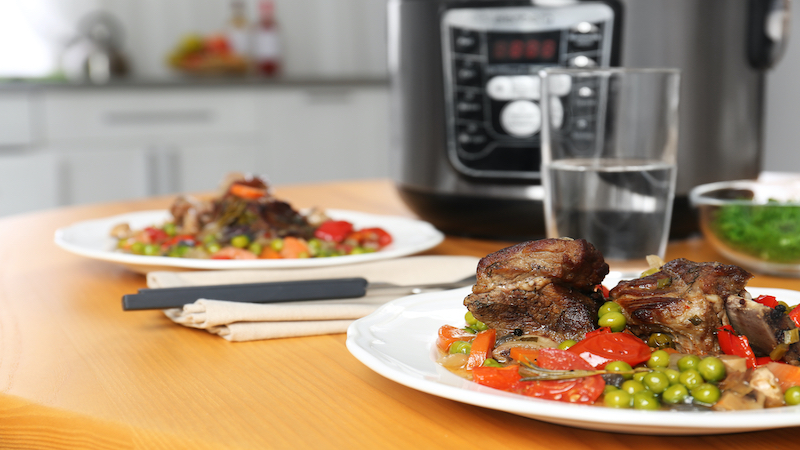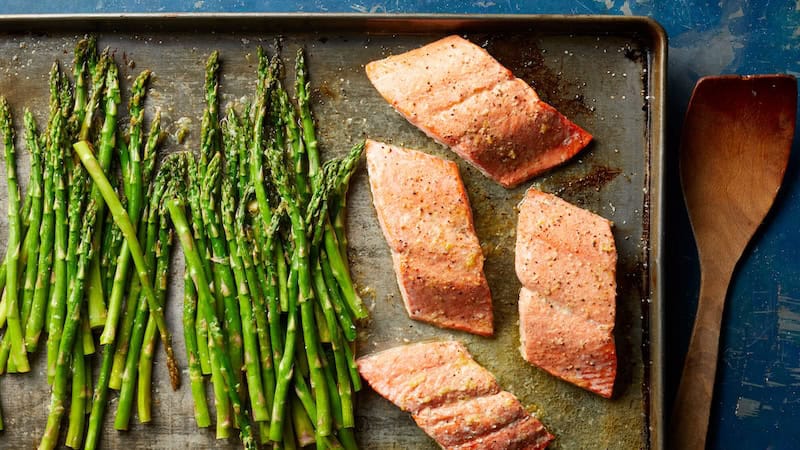Multi-Cooker Benefits: A Meal Changer
Easy, healthy, delicious – oh, and did we say easy?

Move over, Instant Pot! More multitasking countertop appliances are joining the race! Environmental Nutrition explores multi-cooker benefits, including versatility, ease of use, and nutrition. With an abundance of multi-cookers on the market, beginning at under $200, the time is right for stepping onto the bandwagon.
Eating healthy has never been so easy – or so quick! A multi-cooker makes cooking a healthy meal accessible and approachable, and it takes less time and energy than not-so-healthy fast-food runs or tossing a frozen pizza into the oven. Roast a chicken in 30 minutes, cook nutrient packed whole grains like wild rice or barley in 20 minutes, whip up a one-pot bean or lentil-based stew, chowder, or chili in that same 20 minutes – this kitchen marvel really is a meal changer that can help support a healthy diet in the most convenient, time-saving, and delicious ways.
What is a multi-cooker?
Sort of a pressure cooker-slow cooker hybrid, the multi-cooker is a multifunctional phenom that is also a rice cooker, steamer, Dutch oven, baker, yogurt maker, and more. Versatile and easy to use, it’s an excellent replacement for other cooking equipment, like the slow cooker or rice maker, which clears up counter and cabinet space, and frees up time during cleanup – just one pot instead of several pots and pans.
This appliance, like a pressure cooker, heats liquid inside a tight seal, which builds pressure inside the pot as the liquid boils and turns to steam. As the pressure builds, temperature increases. It takes about 15 to 20 minutes for the pot to come to pressure. At this point, the cooking begins at a rate of about 70% less than standard cooking methods. Some dishes require a slow release of pressure after the food is cooked.
Multi-cooker benefits for health
Because a multi-cooker uses very little liquid, reaches a temperature no higher than 250 degrees F, and cooks very quickly, it preserves more nutrients than many other cooking methods. Cooking of any sort will result in the loss of some nutrients, such as water-soluble vitamins, like vitamin C, thiamin, and folate, but it’s minimized in foods exposed to the least liquid at the lowest temperature, for the shortest amount of time. Research also shows that the availability of other nutrients (like lycopene in tomatoes and other carotenoids in veggies like carrots, spinach, and broccoli) actually increases. This is because cooking helps break down the cell walls so they release nutrients and phytochemicals.
Air fryer broccoli: tender, crispy, and nutritious
Cooking can be stressful. Time, energy, and motivation are common obstacles to getting a healthy meal on the table. Preparing meals with a multi-cooker can help. A meal can be thrown together with a potpourri of healthy ingredients from freezer, fridge, and pantry. Healthy whole grains and legumes – dry or canned – are a perfect pairing with fresh, frozen, or canned vegetables and a lean protein like chicken or fish.
With a multi-cooker, the nutrients are retained, and flavors and colors are brighter. Even when there’s just enough time to open a few cans and bags of frozen veggies, your meal can be just as healthy and satisfying. Once the ingredients are in the pot and it’s set, that’s it. Come back when it’s done and serve up a healthy meal.
Environmental Nutrition is the award-winning independent newsletter written by nutrition experts dedicated to providing readers up-to-date, accurate information about health and nutrition in clear, concise English. For more information, visit www.environmentalnutrition.com.
© 2021 Belvoir Media Group, LLC. Distributed by Tribune Content Agency, LLC.
If you’re sold on multi-cooker benefits, you can read brand and model recommendations from Consumer Reports, a trusted voice in objective reviews.


